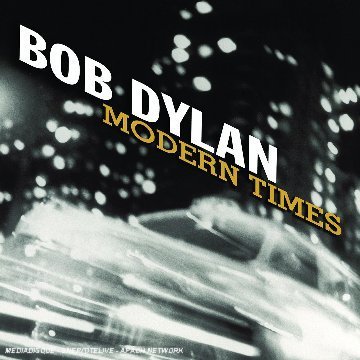
Bob Dylan’s new album “Modern Times” sounds as though it was made by people playing musical instruments, by a man singing with his voice, all in
some sort of space that might actually be encountered in the real
world. This is very unusual in modern popular music, and you might call
it revolutionary, even though it harks back to the sound of recorded
blues, rhythm & blues and rock & roll well into the 70s. (A
sign that the album’s title might be ironic is that its cover sports a
black-and-white photograph from the Forties.)
Beginning in the 70s, popular music began to take on what Theodor Adorno would have called a “phantasmagorical” quality — a process which he
explained in terms of the modern commodity culture, which tends to
produce objects which do not easily reveal how exactly they were made.
The commodity seller benefits from this because it obscures the fact
that he himself has not made the object he’s selling but appropriated
the labor of others to make it (perhaps unfairly.)
Adorno saw the same process at work in the music of Wagner, where a great wash of sound enchants us away from an appreciation of the fact that the
music is produced by individual musicians playing individual
instruments. (Stravinsky, who hated Wagner’s music, once wrote
passionately against the practice of listening to live music with one’s
eyes closed — he felt that one should never forget the physical
process of making music.)
R & b and rock sounded revolutionary in the Fifties quite apart from
their raucous beats and suggestive lyrics — they sounded revolutionary
because they sounded as though they were made by individual musicians,
not by workers in corporatized music factories. But with the rise of
disco and synthesizers and multi-track recording in the 70s, all fine
things in themselves, the recording industry had tools for resubmerging
individual performance into a corporatized “sound”. It commodified rock
and roll — made it phantasmagorical, in Adorno’s sense.
For some reason hard to fathom, “Modern Times” debuted at #1 on Billboard’s
charts and has been one of Dylan’s most successful albums ever. Perhaps
it’s attributable to the nostalgia of baby-boomers, hearing music that
takes them back to the golden age — perhaps it’s attributable to
younger listeners having their ears and minds opened up by something
that sounds different, new.
Most likely it’s a combination of the two — part of the old rascal Dylan’s strange alchemy whereby old forms and old language are somehow deconstructed and recombined to reflect the peculiar aura of the present moment.
